Architectural Wonders of Budapest
Embark on a captivating journey through Budapest, where aesthetic architecture awaits. Experience the beauty of iconic landmarks in this free walking tour.
Time
4 Hours
Stops
12 Places
Distance
10.5 km
St. Stephen's Basilica
Begin your tour at St. Stephen's Basilica, a stunning example of Neoclassical architecture and one of the most important churches in Hungary.
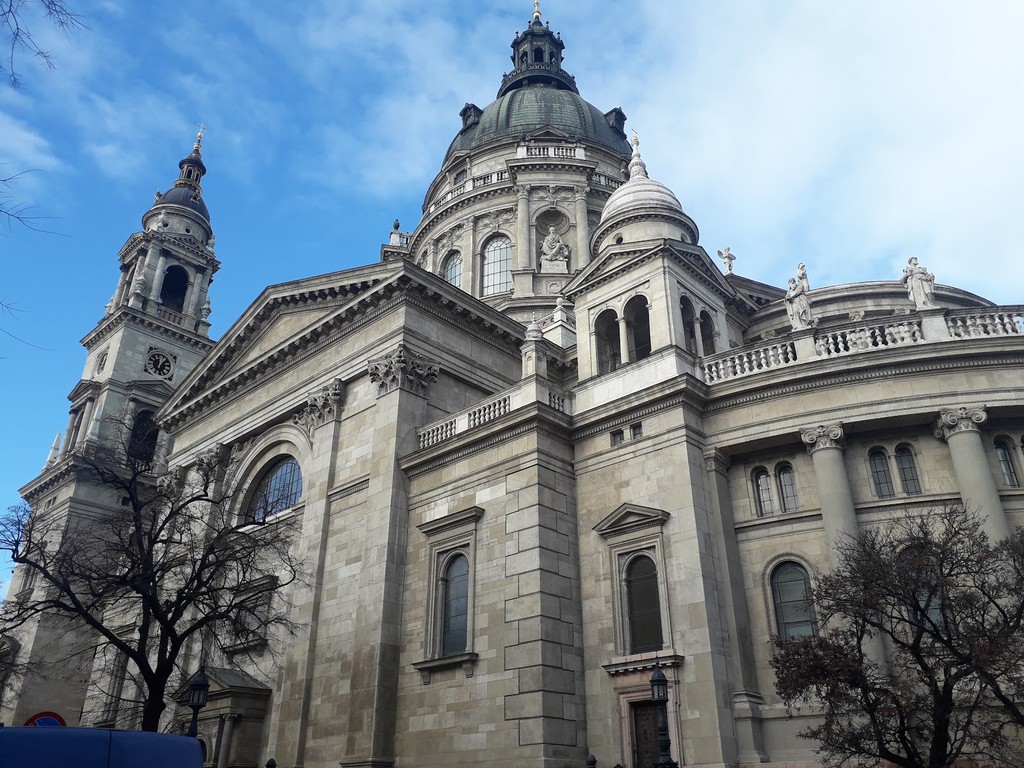
St. Stephen's Basilica (Source: Google Maps)
St. Stephen's Basilica, named after Hungary's first king, is a magnificent Neoclassical church completed in 1905. It stands as a symbol of Hungary's spiritual life and features a stunning dome that reaches 96 meters, representing the height of the Hungarian Parliament. The basilica houses the mummified right hand of St. Stephen, the country's patron saint, and attracts millions of visitors annually. Its intricate interior, adorned with beautiful mosaics, frescoes, and sculptures, reflects the artistry of Hungarian craftsmen. The basilica's grand architecture and serene atmosphere offer a perfect introduction to Budapest's rich history.
Hungarian State Opera House
Walk to the Hungarian State Opera House, an architectural masterpiece known for its opulent interiors and grand façade.
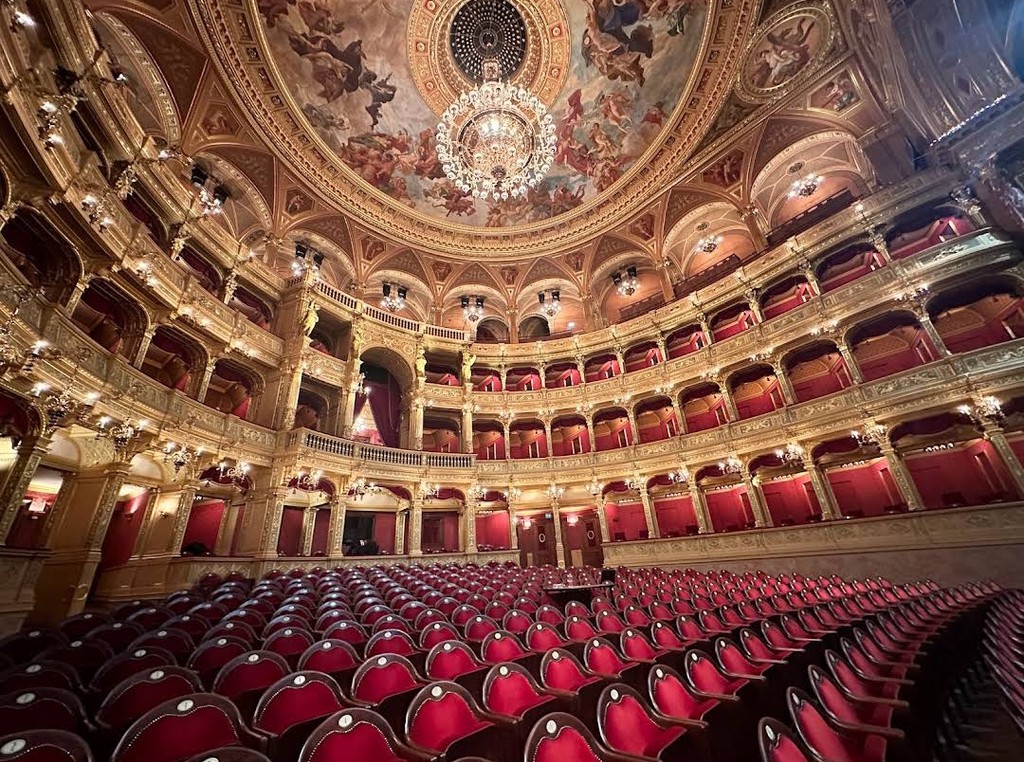
Hungarian State Opera House (Source: Google Maps)
The Hungarian State Opera House, inaugurated in 1884, is an architectural masterpiece designed by Miklós Ybl. Its grand Neo-Renaissance façade and opulent interiors, complete with a stunning chandelier and gilded decorations, make it one of the most beautiful opera houses in the world. The building is renowned for its excellent acoustics and is home to the Hungarian State Opera and the Hungarian National Ballet. Visitors can take guided tours to learn about its history, architecture, and the prominent performances that have taken place here. The opera house is a cultural hub, showcasing Hungary's rich musical heritage.
Andrassy Avenue
Stroll along Andrassy Avenue, a UNESCO World Heritage site lined with stunning 19th-century buildings and elegant boutiques.
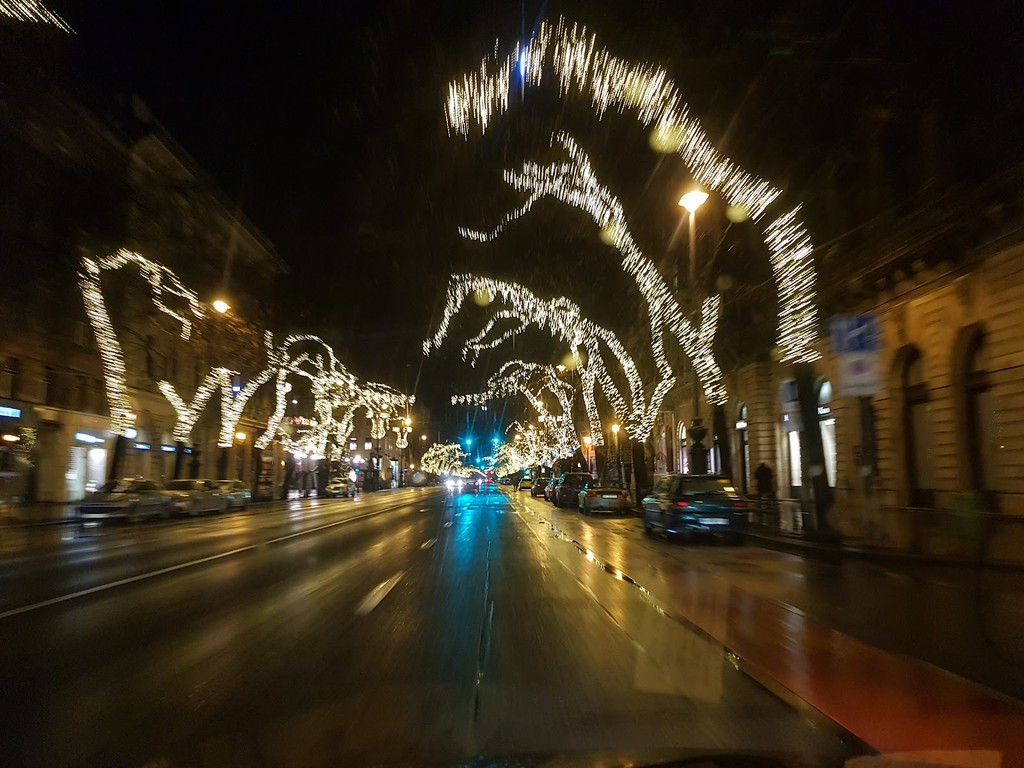
Andrassy Avenue (Source: Google Maps)
Andrassy Avenue, a UNESCO World Heritage site, is one of Budapest's most iconic boulevards. Stretching 2.5 kilometers, it is lined with stunning Neo-Renaissance buildings, elegant boutiques, and cultural institutions. The avenue connects the city center to Heroes' Square and is home to the Hungarian State Opera House and the House of Terror Museum. Its design, reminiscent of Parisian boulevards, showcases the architectural grandeur of the 19th century. Andrassy Avenue is not only a vital thoroughfare but also a cultural corridor, reflecting Budapest's historical significance and artistic vibrancy.
House of Terror Museum
Continue to the House of Terror Museum, which provides a poignant look at the city's history under Nazi and Soviet occupation.
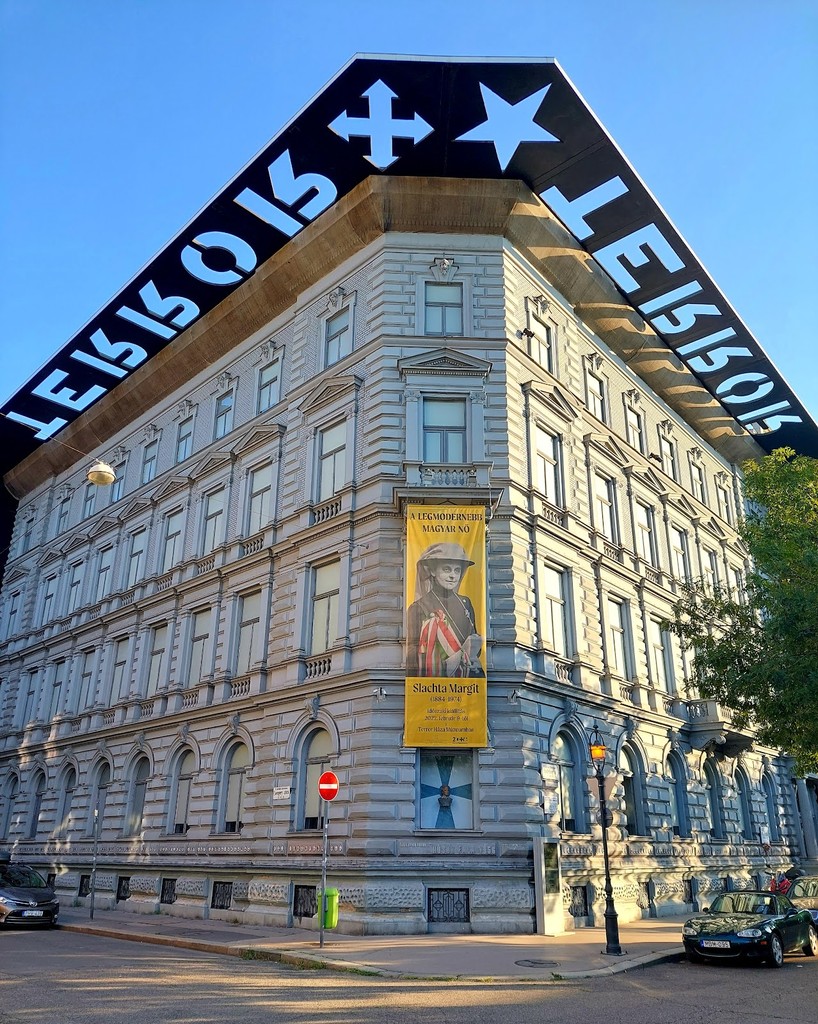
House of Terror Museum (Source: Google Maps)
The House of Terror Museum is located in a historical building that once served as the headquarters for the Nazi and Soviet secret police. Opened in 2002, the museum provides a poignant look at Hungary's turbulent history during the 20th century. Through exhibitions, photographs, and personal testimonies, visitors can gain insight into the experiences of those who suffered under oppressive regimes. The building's stark architecture serves as a powerful reminder of the past, while its exhibitions aim to promote reflection and understanding. It stands as a testament to the resilience of the Hungarian people.
Heroes' Square
Visit the iconic Heroes' Square, home to the Millennium Monument and surrounded by impressive statues of historical figures.
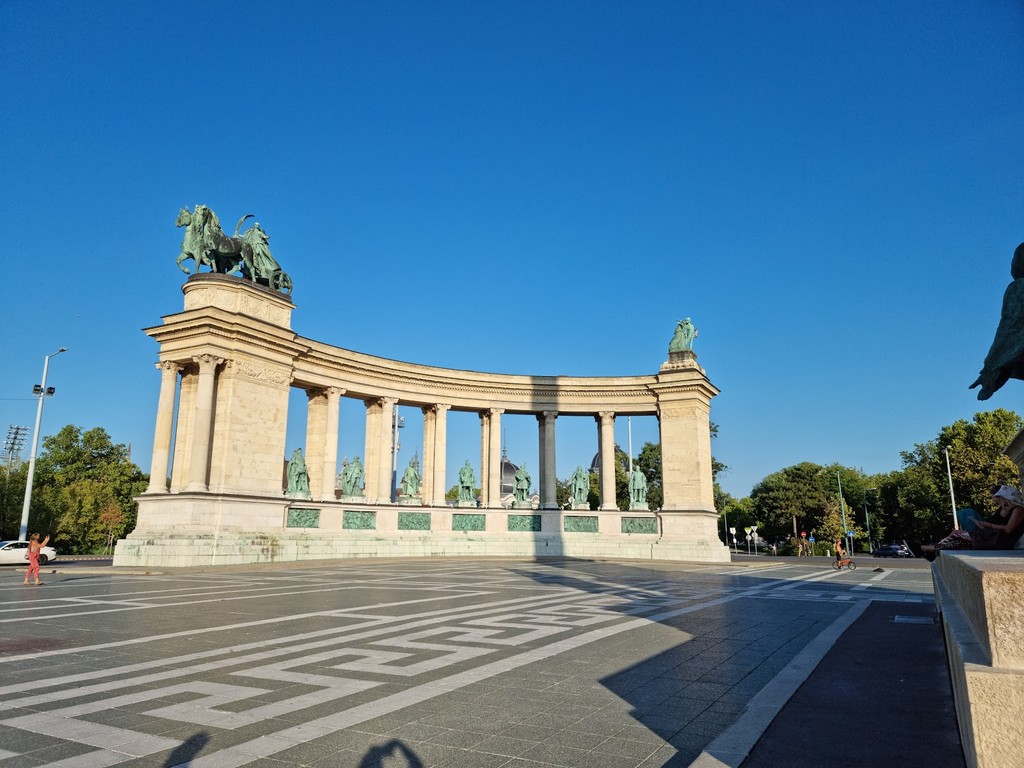
Heroes' Square (Source: Google Maps)
Heroes' Square is one of Budapest's most significant landmarks, featuring the Millennium Monument at its center, which commemorates the leaders of the seven tribes that founded Hungary. Surrounding the square are two impressive colonnades, each adorned with statues of notable Hungarian kings and historical figures. The square is flanked by the Museum of Fine Arts and the Palace of Art, making it a cultural hub. It serves as a gathering place for events and celebrations, reflecting Hungary's national pride and historical legacy. Heroes' Square is a must-visit for those interested in the country's rich history.
Széchenyi Thermal Bath
Head to the Széchenyi Thermal Bath, renowned for its beautiful Neo-Baroque architecture and as one of the largest bath complexes in Europe.
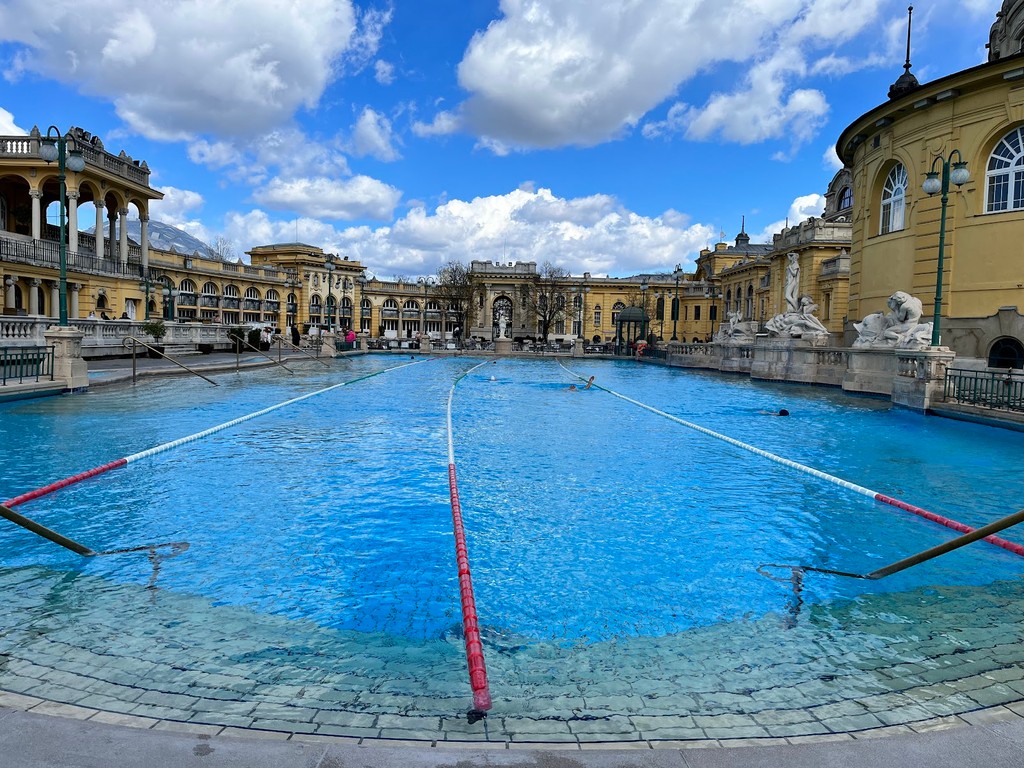
Széchenyi Thermal Bath (Source: Google Maps)
Széchenyi Thermal Bath, one of the largest medicinal baths in Europe, is renowned for its beautiful Neo-Baroque architecture and stunning outdoor pools. Built in 1913, it features a mix of indoor and outdoor thermal pools, saunas, and wellness facilities, attracting locals and tourists alike. The bath's thermal waters, sourced from natural hot springs, are believed to have healing properties. The vibrant atmosphere, particularly in the outdoor pools, creates a unique social experience. Széchenyi Thermal Bath is not just a place for relaxation but also a significant part of Hungarian culture, symbolizing the country's tradition of thermal baths.
Vajdahunyad Castle
Explore Vajdahunyad Castle in City Park, an enchanting mix of architectural styles that showcases Hungary's diverse architectural history.
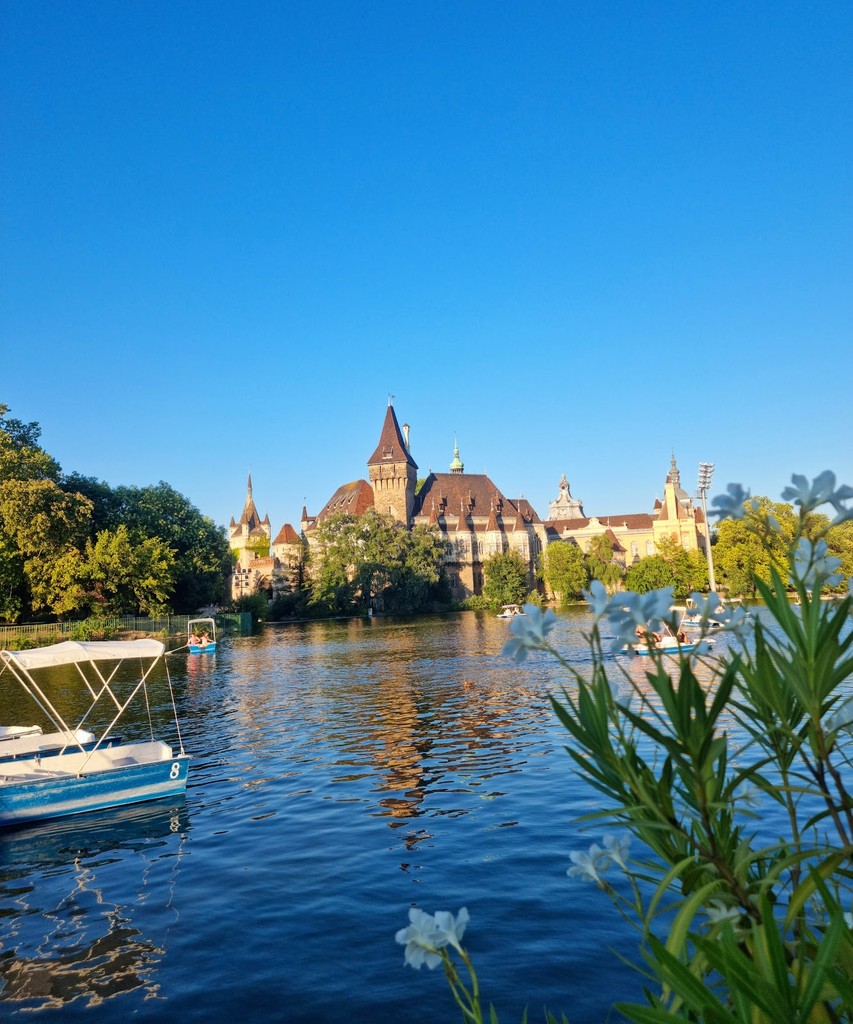
Vajdahunyad Castle (Source: Google Maps)
Vajdahunyad Castle, located in City Park, is an enchanting structure that showcases Hungary's diverse architectural history. Built in 1896 for the Millennial Exhibition, it incorporates elements from various styles, including Romanesque, Gothic, Renaissance, and Baroque. The castle is surrounded by a picturesque lake and gardens, making it a popular spot for both tourists and locals. Inside, the castle houses the Museum of Hungarian Agriculture, offering insights into the country's agricultural heritage. The castle's fairy-tale appearance and historical significance make it a beloved landmark in Budapest.
New York Café
Conclude this segment with a visit to the New York Café, often dubbed the "most beautiful café in the world," offering exquisite interior design and a taste of Budapest's café culture.
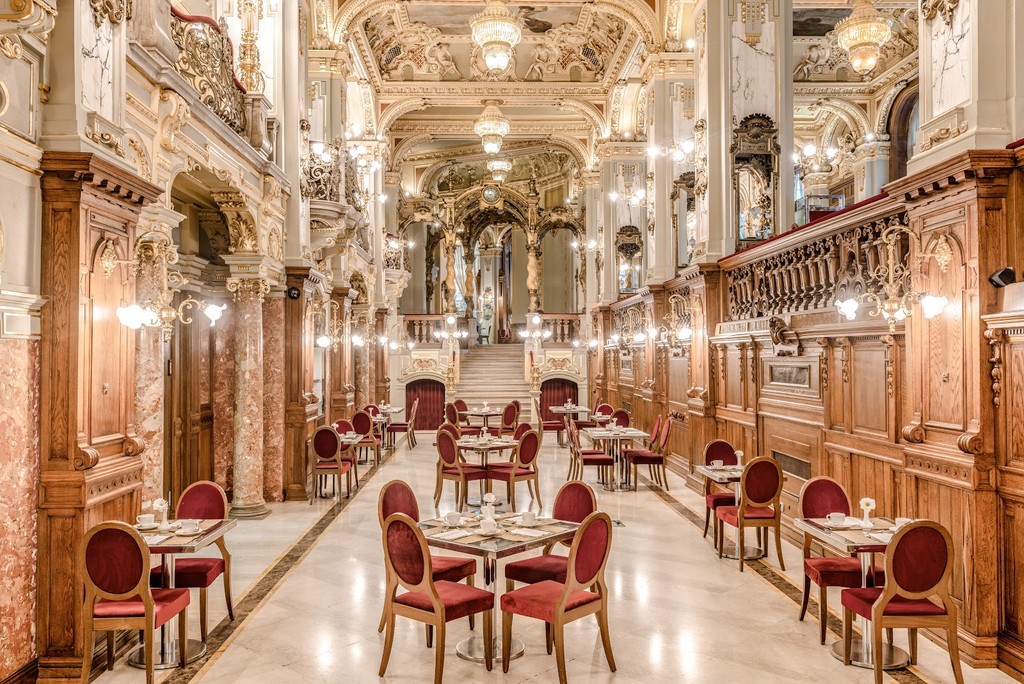
New York Café (Source: Google Maps)
Dohány Street Synagogue
Discover the Dohány Street Synagogue, the largest synagogue in Europe, noted for its Moorish Revival architecture.
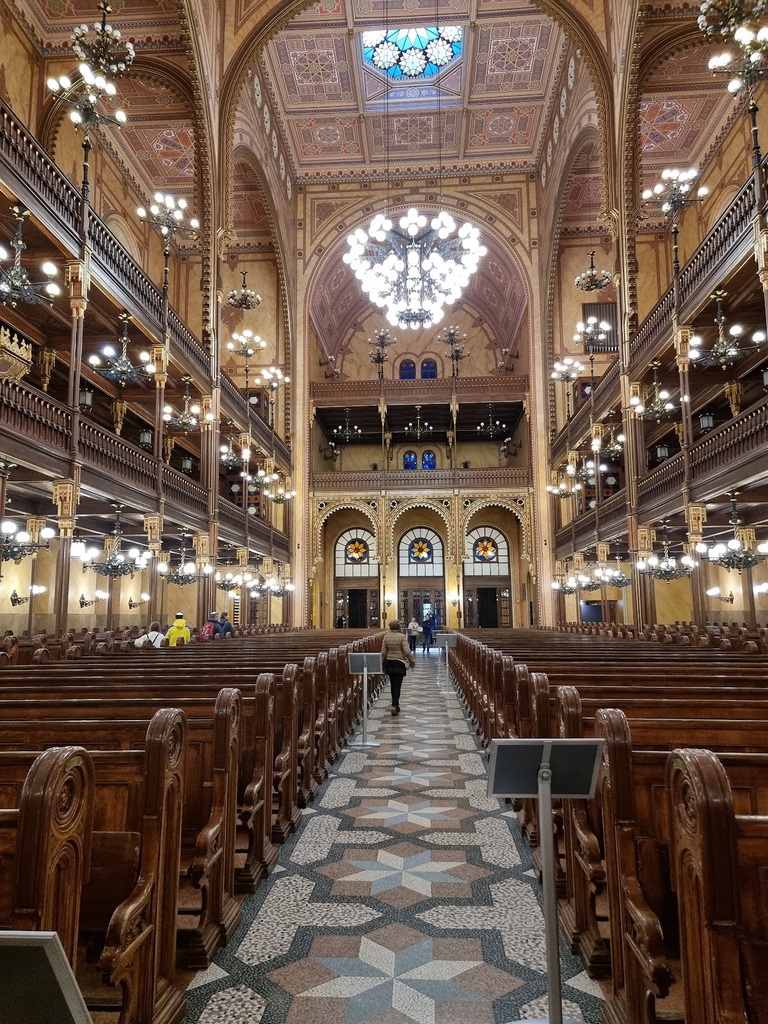
Dohány Street Synagogue (Source: Google Maps)
The Dohány Street Synagogue, also known as the Great Synagogue, is the largest synagogue in Europe and a prominent symbol of Jewish heritage in Hungary. Built in the mid-19th century, it features stunning Moorish Revival architecture, characterized by its intricate details, vibrant colors, and two towering domes. The synagogue can accommodate over 3,000 worshippers and is home to a museum dedicated to Jewish history in Hungary. The site also includes a memorial garden and the Raoul Wallenberg Memorial, honoring those who saved Jewish lives during the Holocaust. The synagogue stands as a testament to the resilience of the Jewish community.
Great Market Hall
Head to the Great Market Hall to experience a vibrant atmosphere and admire the building's magnificent architecture while sampling local Hungarian delicacies.
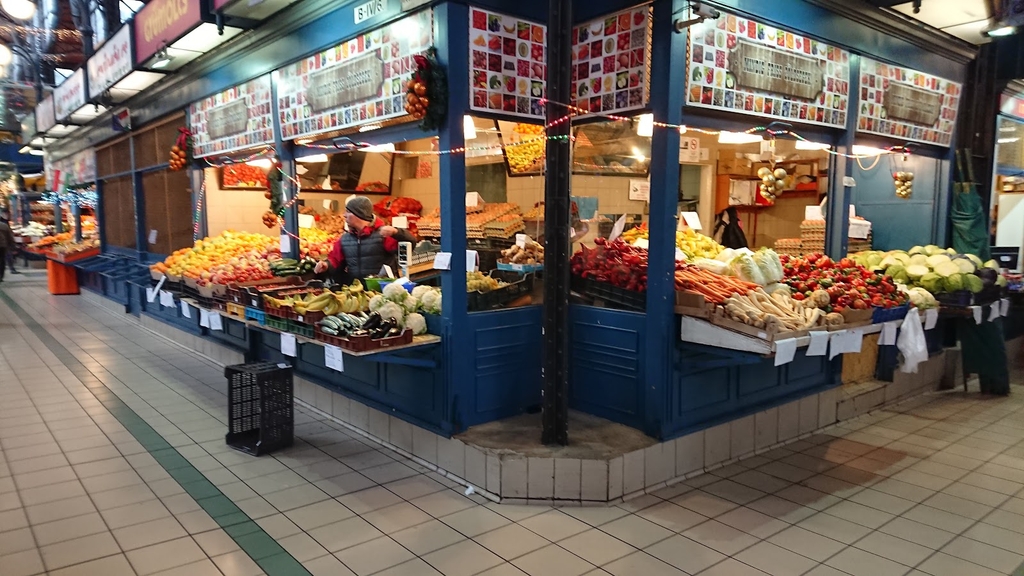
Great Market Hall (Source: Google Maps)
The Great Market Hall, located at the end of Váci Street, is Budapest's largest and oldest indoor market, dating back to 1897. Its stunning vaulted roof and vibrant atmosphere attract visitors seeking to experience Hungarian culture. The market features a wide array of stalls selling fresh produce, meats, spices, and traditional Hungarian delicacies. The upper level houses numerous food vendors and souvenir shops, making it a great place to sample local cuisine. The Great Market Hall is not only a shopping destination but also a cultural landmark, reflecting the culinary traditions and social life of Budapest.
Liberty Bridge
Cross the Liberty Bridge, a picturesque structure that connects the Buda and Pest sides of the city, offering stunning views of the Danube River.
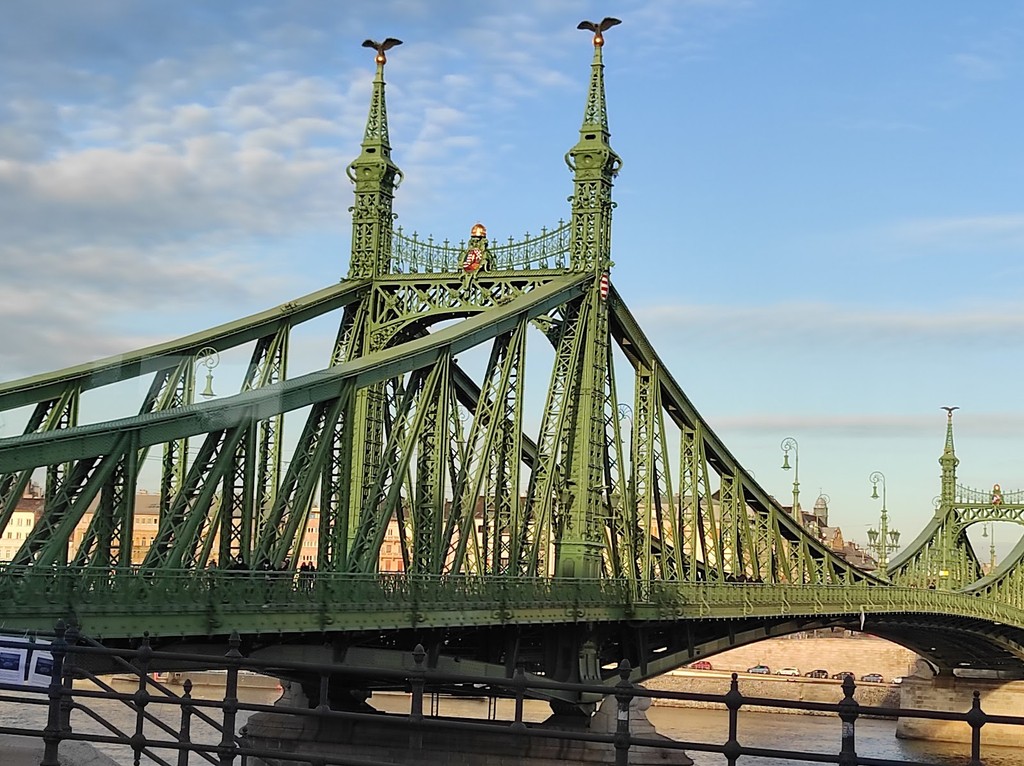
Liberty Bridge (Source: Google Maps)
Liberty Bridge, completed in 1896, is a notable suspension bridge that connects Buda and Pest across the Danube River. Its green color and Art Nouveau design make it one of the most picturesque bridges in Budapest. The bridge features beautiful decorative elements, including a series of ornate lampposts and statues. Liberty Bridge is not only a vital transportation link but also a popular spot for pedestrians and cyclists, offering stunning views of the river and the cityscape. Its historical significance and aesthetic appeal make it a beloved landmark for both locals and tourists.
Gellért Hill
Finish the tour with a climb up Gellért Hill for a breathtaking panoramic view of Budapest, crowned by the impressive Liberty Statue.
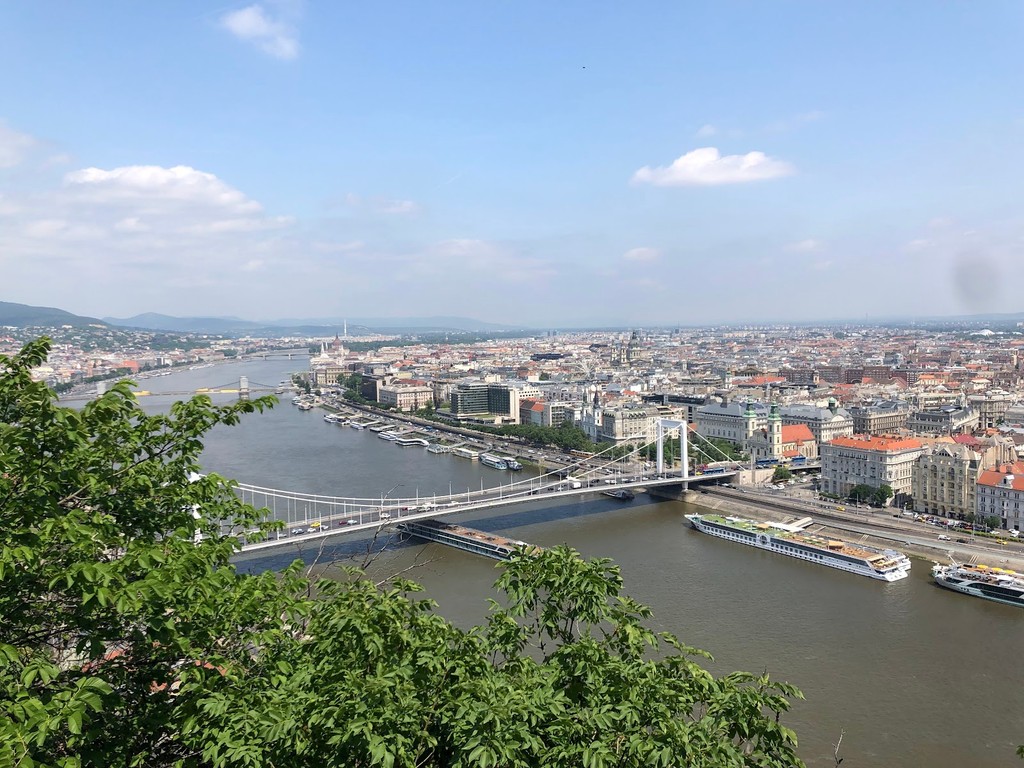
Gellért Hill (Source: Google Maps)
Gellért Hill rises 235 meters above the city and offers breathtaking panoramic views of Budapest. Crowned by the impressive Liberty Statue, which commemorates those who sacrificed their lives for the independence of Hungary, the hill is a popular destination for both locals and tourists. The site is also home to the Gellért Hotel and the famous Gellért Baths, known for their thermal waters. The hill's lush greenery and historical significance make it a serene escape from the bustling city below. Gellért Hill is not only a natural landmark but also a symbol of Budapest's rich history and resilience.

Your travels, your rules.
Create your own Free Walking Tours.
Set your preferences, distances and anything you want to do or see.
Completely free, no payment required.